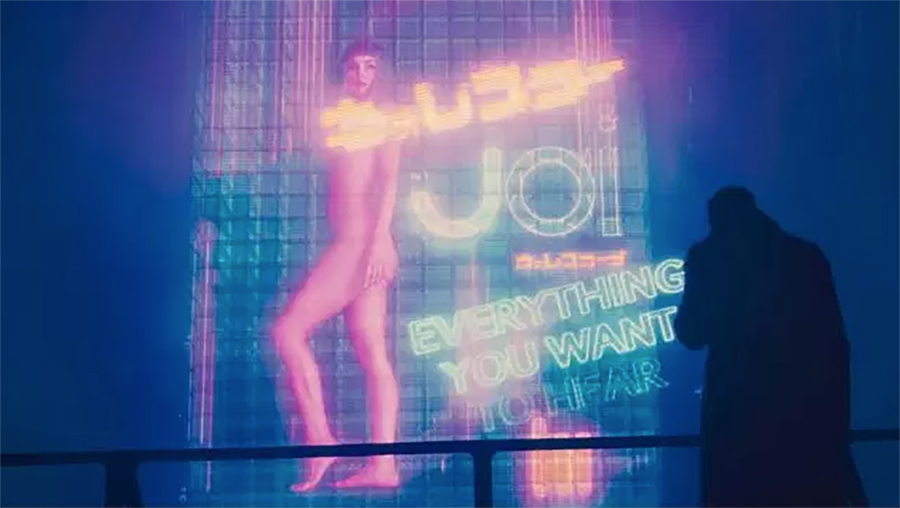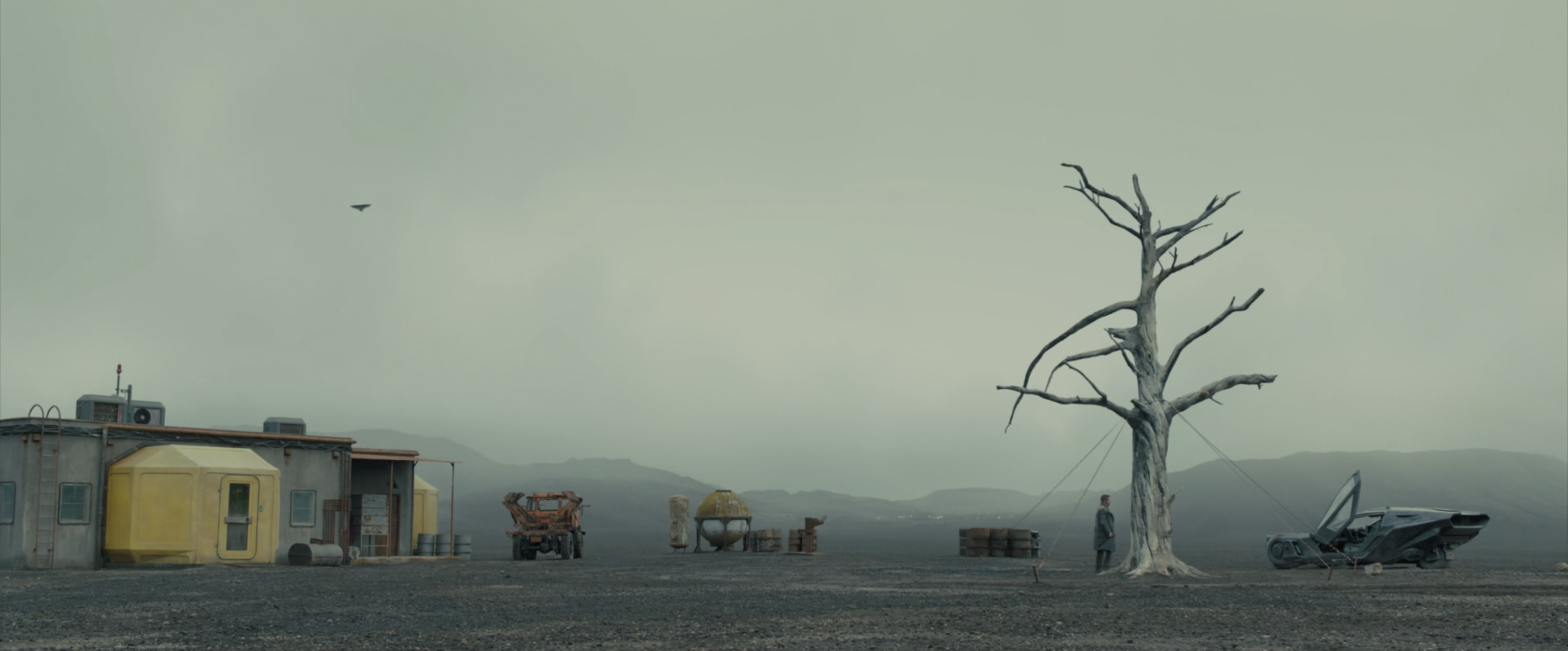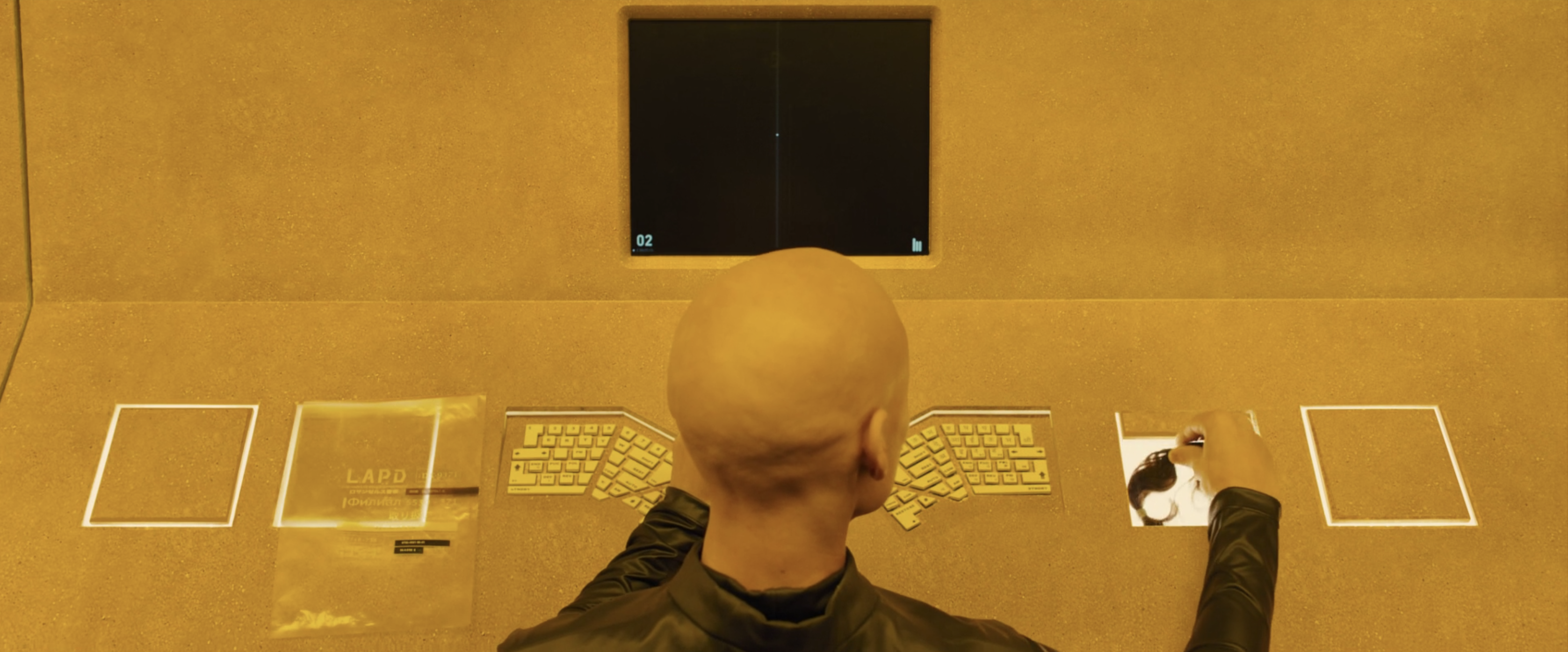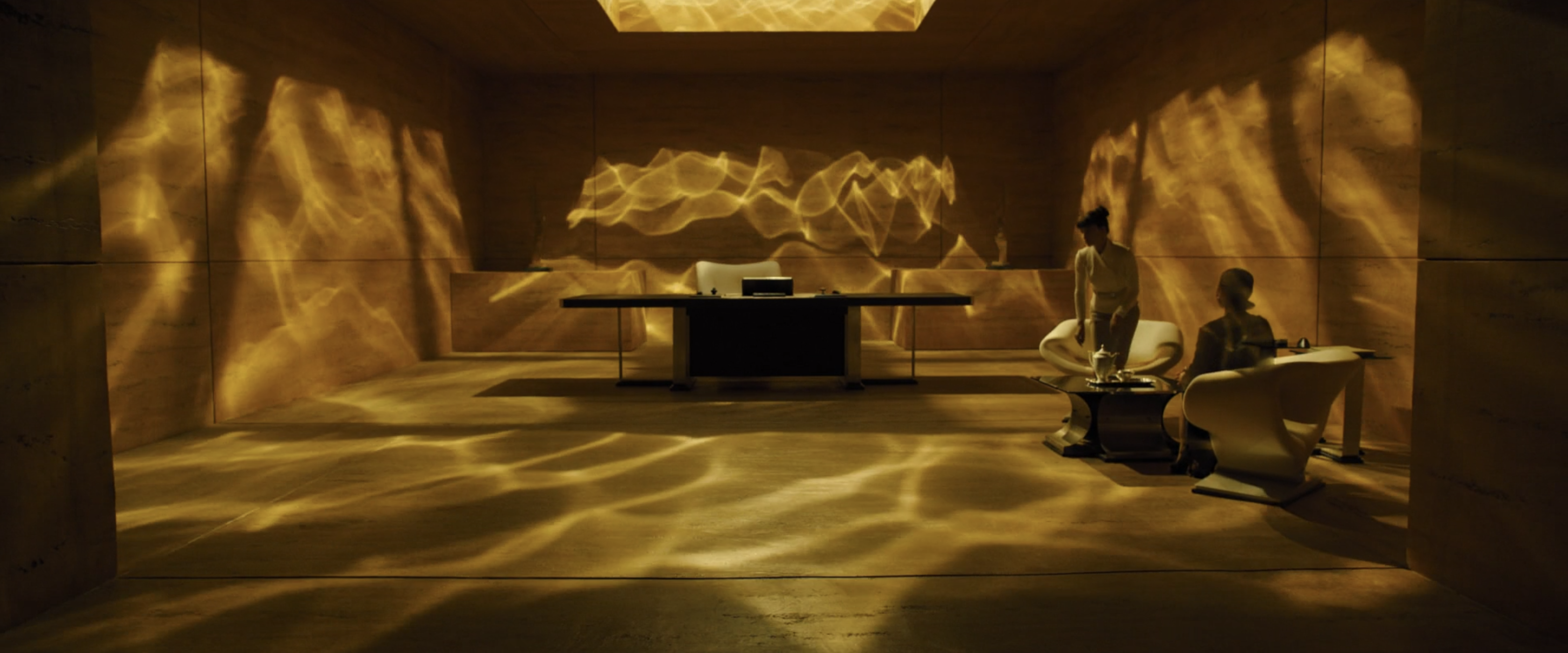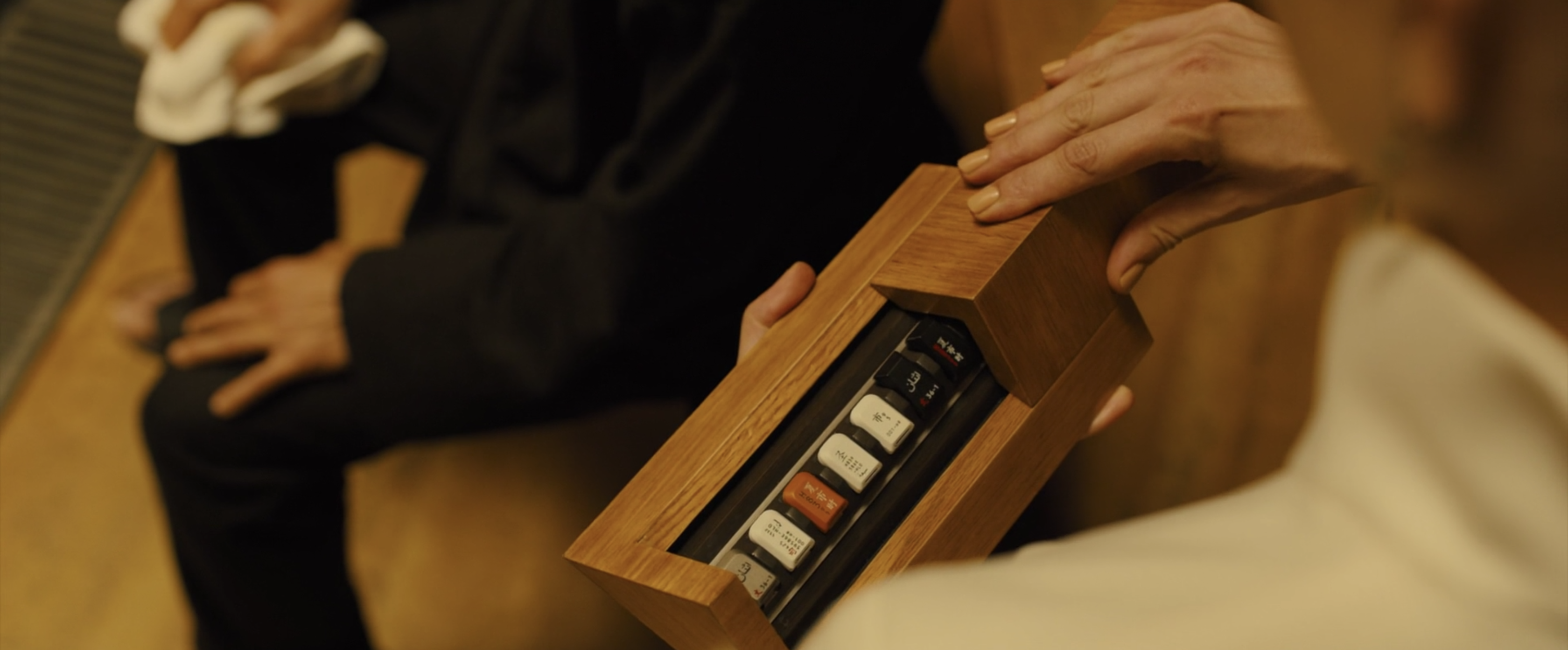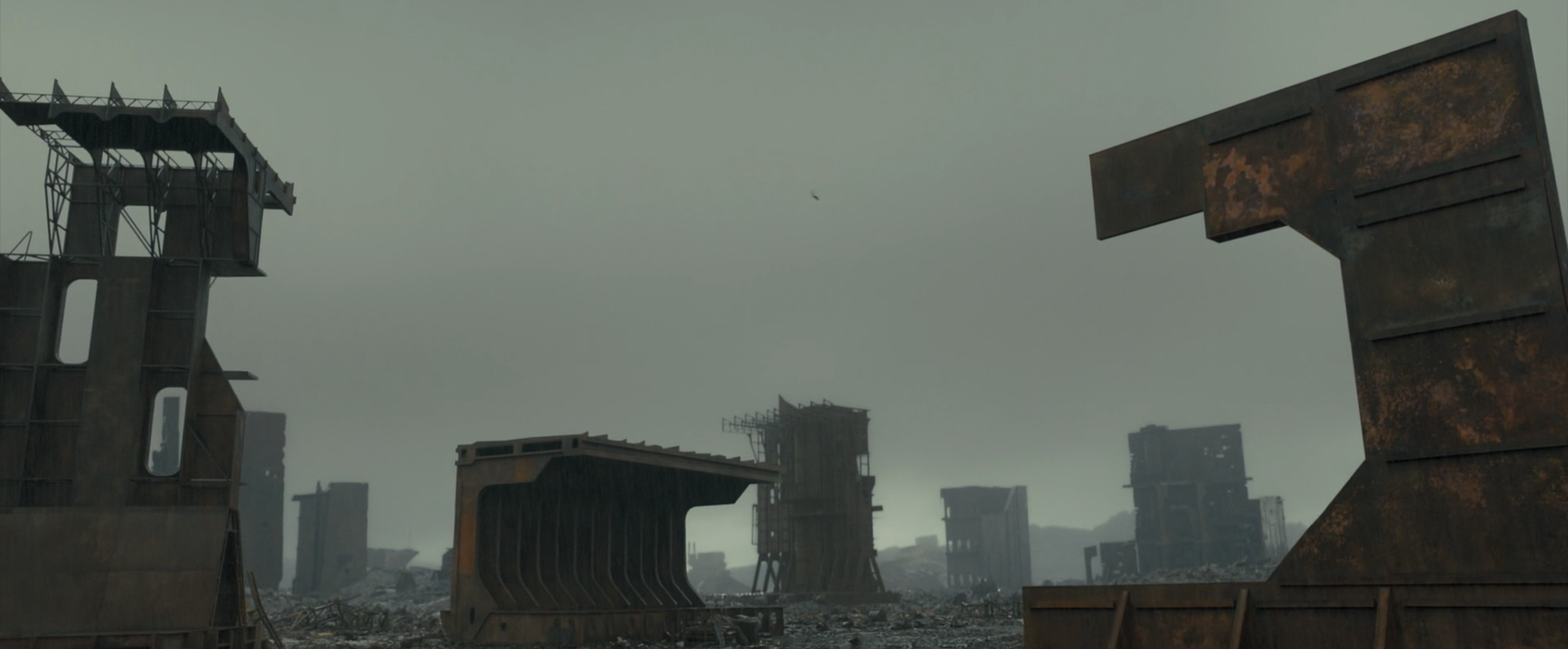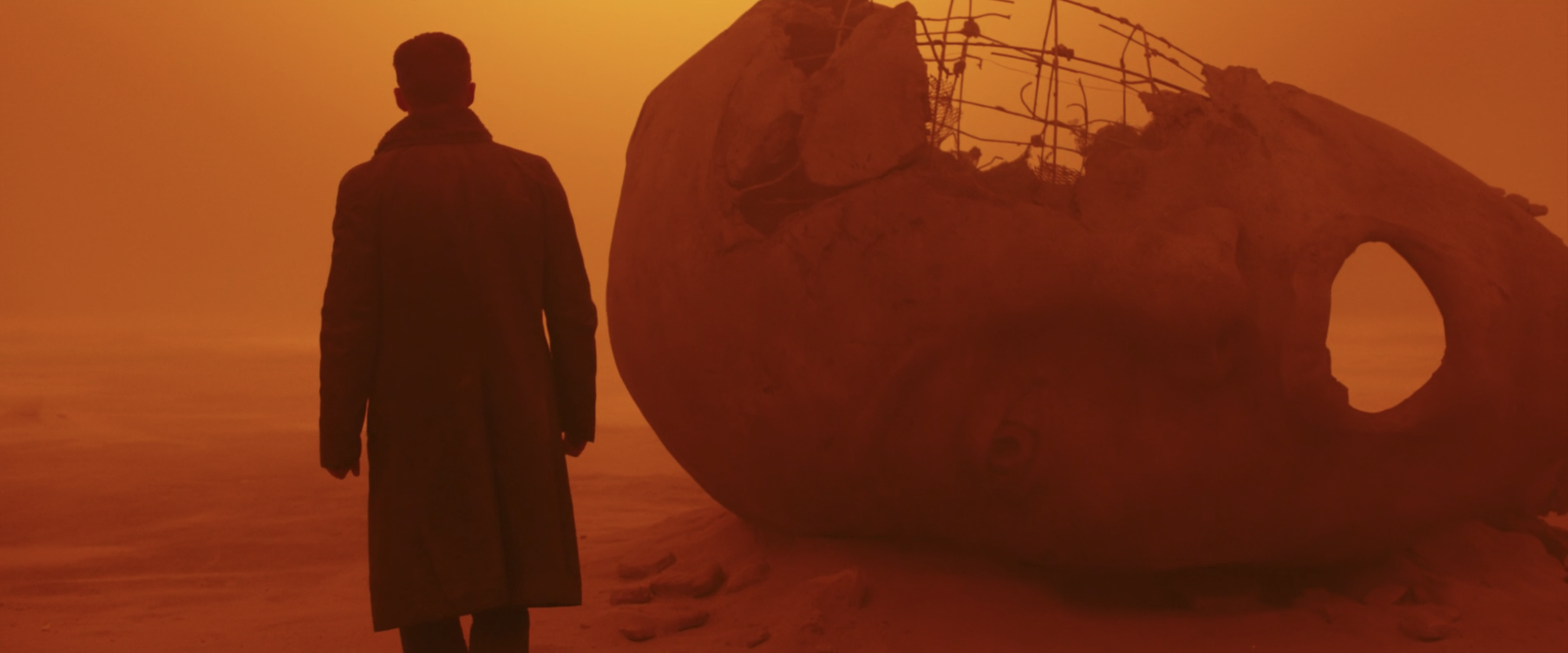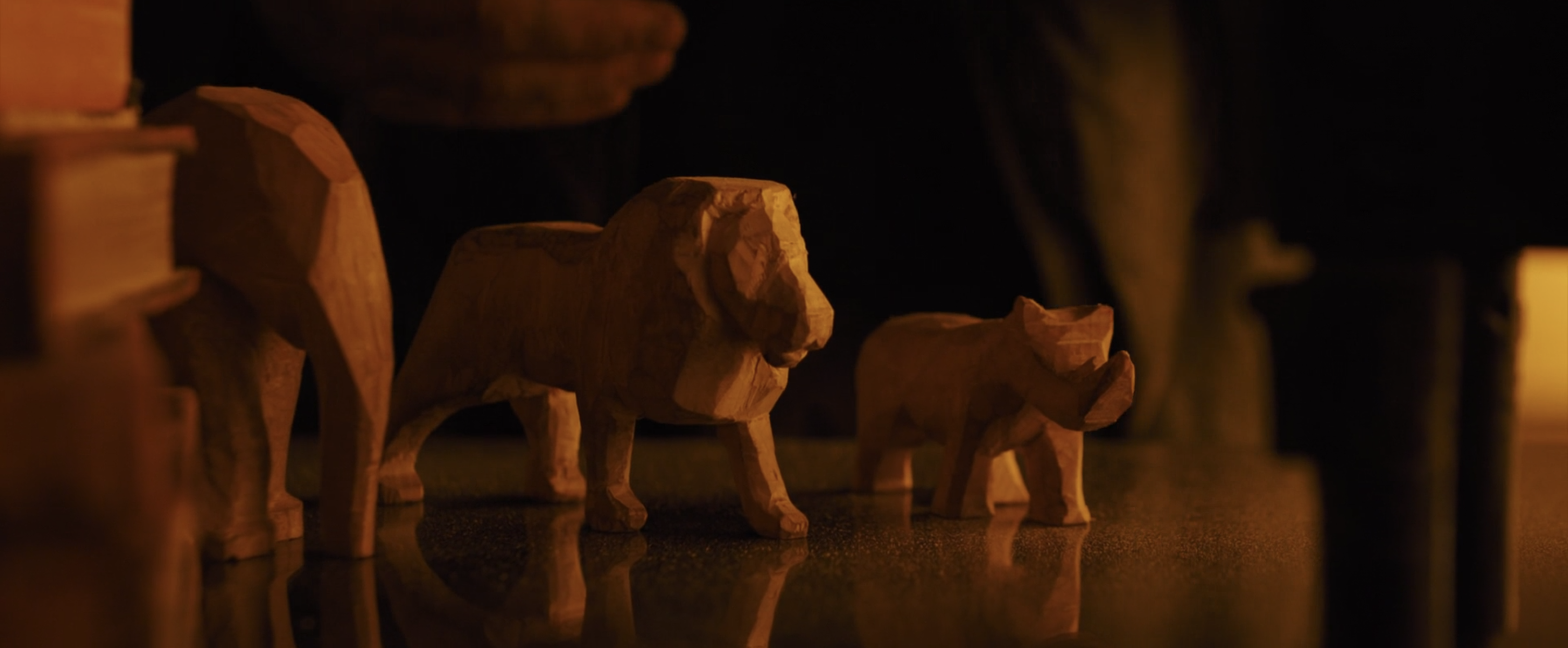Daniel Walber's weekly series on Production Design. Click on the images to see them in magnified detail.
While planning the look of Blade Runner 2049, director Denis Villeneuve asked production designer Dennis Gassner for something very specific: brutality. As Canadians, Villeneuve and Gassner know a whole lot about that, at least architecturally. Canada’s big cities are inflected by brutalist buildings, stark and intimidating structures that have made their mark on cinema. Enemy is a good example, along with a lot of David Cronenberg’s early work.
Of course, Blade Runner 2049 takes place mostly in Los Angeles and was shot in Hungary. But its use of brutalist design transcends the specificity of place, resembling a vaguely Canadian nightmare as much as any waking version of California...
Its sets are imposing, glaring down on K (Ryan Gosling) with impassive malevolence. The Oscar-nominated work of Gassner and set decorator Alessandra Querzola is intensely physical, a rebuttal of sorts to the CG panoramas of recent big-budget science fiction.
This does not mean that there’s no animation or special effects in the movie. There’s plenty, from some of the action sequences to the flashy and ubiquitous advertising. The point, rather, is that the design of Blade Runner 2049 emphasizes the relationship between the digital aspirations of technology and the physical weight of its dystopian reality.
This is why the movie opens, not under the bright lights of downtown, but out on a farm in the middle of nowhere.
It feels like something out of the past, a solitary hideout with a low-lying house and the thoroughly unglamorous agriculture of edible larva. A lone, dead tree is held in place by rope. And if that’s not tangible enough, Sapper Morton (Dave Bautista) and K crash through a wall.
Intriguingly, this blunt tangibility continues into the headquarters of the Wallace Corporation. This towering monstrosity in the center of LA, its exterior recognizable from the original film, is the nerve center of this universe. It is here where the replicants are designed and created, where the line between human and machine is dictated by corporate will.
This desk, for example, is more desk than computer. There are no moving fields of light, no holographic informational displays. It even has a keyboard, arranged in the shape of the Wallace logo.
Every interior shares this color palette. Entire rooms are built out of wood, occasionally accented by the rippling shadows of unseen pools of water. A few rooms are brightened by skylights. Here, brutalist rigor is lit by an uncanny and deceptive warmth, an ersatz hearth or womb.
Even the strangest of Wallace’s technologies come in decidedly physical form. A particular highlight is the strange chip that Luv (Sylvia Hoeks) inserts behind the ear of her boss, Neander Wallace (Jared Leto). They look like disconnected keys from an old keyboard, kept in a smooth wooden box.
This, therefore, is an extremely tangible dystopia. The center of the city may be full of enormous holographic advertisements, but there is never any question that the reality of life is much more grounded and brutal. This is especially evident in the locations outside LA, desolate wastelands of urban death. San Diego has been reduced to brutalist fragments, the giant iron bones of now-extinct buildings.
Las Vegas is even more skeletal, in that its fallen objects are actually humanoid. K meanders through the corpses of artificial giants and their high heels.
All of these sets, which feel tangible even if they are occasionally enhanced by special effects, underline a key idea. Blade Runner 2049 is about a society in which tangible does not necessarily mean real. Replicants look like humans, they move like humans, and they fight as humans. Yet they’re told that something inside, some intangible lack, makes them fake.
Moreover, the revolutionary fact that threatens to overturn the system is not an abstract assertion of replicant humanity through emotional or artistic performance. Emotions can be denied, or dismissed as higher quality programming. Rather, the grand revelation is a proof of biology, the incontrovertible evidence of birth. This central, deeply physical metaphor is why Blade Runner 2049 could never be a fantasy of flashing lights and floating holograms. Its secrets and its conundrums are tangible, even brutal, and so is its world.
Previously: The Shape of Water
